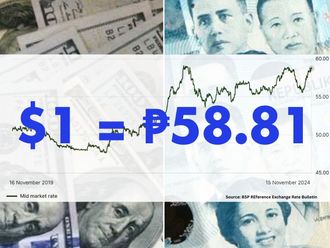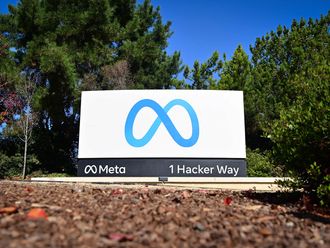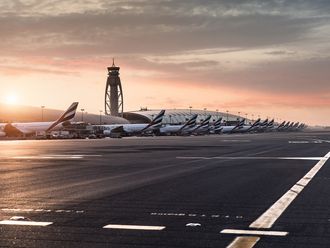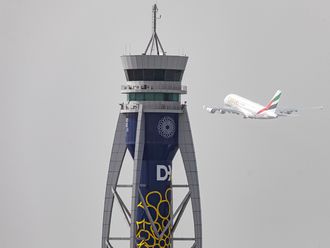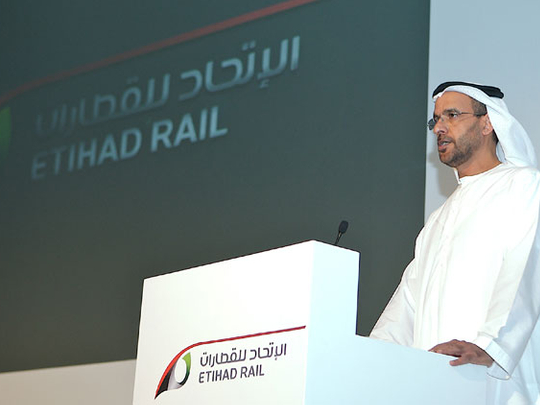
Dubai: Etihad Rail, the master developer and operator of the UAE’s first railway network - formerly known as Union Railway - unveiled its new corporate identity, which incorporates the colours of the UAE flag as a symbol of the national significance of the railway network.
Etihad Rail also revealed its future plans for the nationwide railway project and its phases of implementation, and announced that its first route will be completed in 2013 to transport the first shipment of granulated sulphur from Shah and Habshan to Ruwais, to be exported abroad in partnership with Abu Dhabi National Oil Company (Adnoc).
The announcement was made at a press conference held by Etihad Rail at The Yas Hotel, Abu Dhabi in the presence of Nasser Al Suwaidi, Chairman of the Board of Directors of Etihad Rail and Mattar Al Tayer, the company’s Vice Chairman, and attended by representatives of both the private and public sectors, as well as local, regional and international media.
The conference presented details about the project, shedding light on the railway’s social, economic and environmental benefits, and highlighted the rationale behind the new corporate identity.
Nasser Al Suwaidi stated in his presentation that the Etihad Rail network is one of the most significant national projects in the development of the UAE, as it looks to provide the country with a modern, safe, and integrated railway network.
This flagship project was established by the Federal Government under the patronage of Shaikh Khalifa bin Zayed Al Nahyan, President of the UAE, in line with major investment initiatives including Vision 2021 and the Abu Dhabi Vision 2030.
“The development of an integrated railway network,” Al Suwaidi explained, “signifies the inception of a new chapter of transport in the UAE”. The railway network will form an imperative part of the country’s infrastructure and promote integration between various methods of transportation, both current and planned for the future.
Talking about the developments of the railway network, Al Suwaidi added: “The UAE has a long and proud tradition as a trading economy and we at Etihad Rail are developing an extensive rail network that will expand this tradition and further grow the UAE as a logistics hub for businesses and industries in the region and beyond.”
The Etihad Rail network is expected to extend up to 1,200km in length, connecting the Emirates and linking the UAE to Saudi Arabia (via Ghweifat) in the west and to Oman (via Al Ain) in the east. Built in line with the latest technologies in accordance with the highest international standards, the railway will also form a vital part of the greater GCC railway network – facilitating trade, opening up communication channels, and fostering economic and infrastructure development.
The importance of such a project on different levels was stressed throughout the presentation, particularly its role in sustaining national prosperity, driving social development and economic growth, and dramatically improving the UAE’s transport and logistics sectors by linking ports, industry, and population centres. The project will contribute to the overall development of the UAE while also reducing the amount of pollution emitted from freight vehicles on roads as well as significantly decreasing the number of traffic accidents on highways.
Ultimately, the modern and integrated railway network will offer cutting-edge benefits and dramatically improve the way people and goods move throughout the region - providing faster, safer, more reliable, and more environmentally sustainable services than alternative transport systems.
Mattar Al Tayer, Vice Chairman of the Board of Directors of Etihad Rail, explained that the mixed-traffic railway network is set to be developed in three phases: Phase 1, Phase 2 and Phase 3. Phase 1 of the project incorporates the Shah-Habshan-Ruwais route – with the link between Habshan and Ruwais scheduled to be completed in the beginning of 2013 and that between Shah and Habshan by the end of 2014.
The second stage of the project, or Phase 2, involves the construction of the remainder of the Abu Dhabi Emirate network and a connection to Dubai – covering vital areas such as Mussaffah and the Khalifa and Jebel Ali ports. The third and final phase entails the implementation of the rest of the network in the Northern Emirates.
Etihad Rail not only seeks to be a global leader respected in its field, but also holds a commitment to providing training and professional development opportunities for talented individuals. Etihad Rail also aims to accelerate the process of knowledge sharing and expertise transfer from its global team of professionals, to the next generation of UAE citizens specialising in the transport and logistics fields.
The company has made dramatic progress since its establishment in 2009. Many detailed technical, commercial and financial studies have been completed to confirm the economic and social impact the railway will bring to the UAE. A comprehensive model of the predicted passenger and freight flows for the next 20 – 30 years has been built which demonstrates, for example, that around 50 million tonnes of freight and 16 million passengers can be reliably predicted with more on top to come.
The environmental and safety benefits that the railway will bring to the citizens and business of the UAE are now better understood with Environmental Impact Assessment for the Shah-Habshan route completed and approved by the Environmental Agency of Abu Dhabi. Detailed technical analysis is now complete to understand and manage the impact of sand, heat and humidity on the railway and sophisticated studies that have been undertaken to understand topography, geomorphology and terrain now mean the precise location of the tracks is understood in the Western Region and, in due course, will soon be known throughout the rest of the UAE.
Working with one of the world’s leading Investment Banks, the financing strategy for the project is close to completion and commercial arrangements with some of the UAE’s leading businesses to transport their products and raw materials by rail are well advanced.
Eighteen months ago, the project was still in feasibility, still an exciting vision but just a vision nonetheless. Now that vision is fast becoming reality, building an unstoppable momentum. 2011 will be the year when the tracks of one of the world’s newest and most exciting railway networks start to be built bringing with them a bright new era for travel and transport in the UAE.



